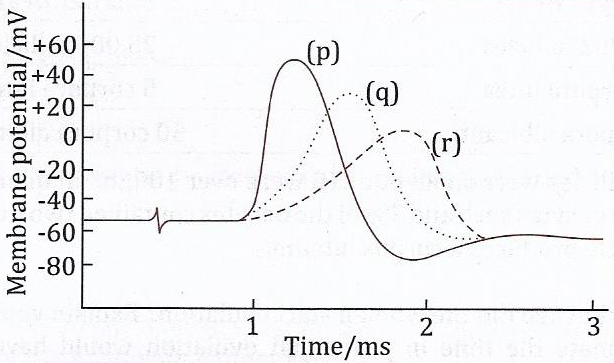THE UNITED REPUBLIC OF TANZANIA NATIONAL EXAMINATIONS COUNCIL
ADVANCED CERTIFICATE OF SECONDARY EDUCATION
EXAMINATION
133/2 BIOLOGY 2
For Both School and Private Candidates)
Time: 2:30 Hours Tuesday, 16th February 2010 p.m.
Instructions
1. This paper consists of eight (9) questions in sections A. B and C
2. Answer five questions by choosing at least one (I) question from each section.
3. Each question carries twenty (20) marks.
4. Except for diagrams that must be drawn in pencil, all writing should be in blue or black ink.
5. Cellular phones are not allowed in the examination room.
6. Write your Examination Number on every page of your answer booklet(s).
SECTION A
1.(a) Draw a large, well labelled diagram of a chloroplast of higher plants.
View Ans
(b) How is the chloroplast's structure related to its function?
View Ans
(c) (i) What are lysosomes?
(ii)Briefly elaborate on the roles of lysosomes in organisms.
View Ans
2.Give an account of the features which have made insects the most successful group in the animals Kingdom.
View Ans
SECTION B
3.Figure 1 shows the results of an experiment set to find the effect of Na+ ions on the production of action potentials in squid axons. The axons were bathed in different concentrations of isotonic sea water.

Fig. 1
(a) (i) Which action potentials correspond with axons placed in normal, half or one third sea water?
(ii) Explain the effect of the different concentrations of sea water on the action potential.
View Ans
(b) (i) Describe the ionic changes occurring across an axon membrane during a refractory period.
(ii)Explain in terms of the resistance of the axoplasm and local circuits, why giant axons conduct impulses at greater velocities than fine axons
View Ans
4.(a) Why is it necessary for pepsin to be secreted in an inactive state?
View Ans
(b) How is the small intestine (ileum) adapted to its function?
View Ans
(c) The leaves of most green plants are well adapted to the process of photosynthesis. Discuss
View Ans
5.(a) Define guttation.
(b) How are xerophytes capable of surviving in their environments?
View Ans
(c) Outline the different ways in which endothermic animals respond to cold and hot conditions.
View Ans
6.Figure 2 shows two solutions which are separated by a partially permeable membrane. Study it carefully and answer the questions that follow.

Fig. 2
(a) Which solution has a higher concentration of water molecules?
(b) Which solution is more concentrated?
(c) In which direction will osmosis occur?
(d) Which of the two values of Ψ is higher?
(i) -1000kPa?
(ii) -500kPa?
(e) Which solutions has:
(i)Higher Ψ
(ii)Higher solute potential?
What is the relationship between Ψs and Ψ of a solution at atmospheric pressure?
View Ans
7.Give any four (4) differences between meiosis and mitosis.
View Ans
(b) Explain the significance of meiosis in multicellular organisms.
View Ans
8.(a) Explain how artificial selection in plants and animals by man supports organic evolution.
View Ans
(b) How does adaptive radiation bring about speciation?
View Ans
9.Explain how a quadrat can be used to estimate population size with respect to three aspects of species distribution namely: species density, species frequency and species cover.
View Ans
 For Call,Sms&WhatsApp: 255769929722 / 255754805256
For Call,Sms&WhatsApp: 255769929722 / 255754805256
 For Call,Sms&WhatsApp: 255769929722 / 255754805256
For Call,Sms&WhatsApp: 255769929722 / 255754805256
 For Call,Sms&WhatsApp: 255769929722 / 255754805256
For Call,Sms&WhatsApp: 255769929722 / 255754805256